The Lilith Blog
April 7, 2017 by Mel Weiss
“The World’s Least Likely” Multicultural Seder Prep in Small-Town Maine

flickr.com/cadencrawford
It bears mentioning that very little about Jewish life in our small town in central Maine resembles the larger world. And it also bears mentioning that, in a lot of ways, this is the most traditional community I’ve ever been part of.
It can be hard to tell if some of our idiosyncrasies are cutting-edge or a throwback to an earlier era. When I have kosher meat ordered in bulk through our local Maronite Lebanese butcher, am I embracing a post-modern, consciously interfaith model of community… or just trading on a historic relationship between the two “other” groups in town? When my wife and I schlep kosher items from Portland, Boston, and points south up to our town, are we ironically embracing an intersectional understanding of our Jewish and female identities and responsibilities… or are we just doing the modern version of what women of our congregation have been doing since they had boxes of groceries shipped up on the bottom of a Greyhound bus?
And, maybe first and foremost, when I gather the world’s least likely group of women to clean, kasher, and cook for days straight before our rowdy community seder, am I doing the radically innovative… or the most boringly practical? (And as long as the chametz gets destroyed and the matza ball soup doesn’t, should I care?)
- No Comments
April 7, 2017 by Beth Kissileff
What We Eat Connects Us
 For Joan Nathan, food is a connector, allowing those of different generations and cultural traditions to come together in eating, and in understanding the culture behind the food. For Nathan, the value of food is quite personal as well. When Nathan went to see her 103-year-old mother, Pearl Nathan, in Providence, RI in February, she showed her mother a recipe for hardboiled eggs with spinach from her new cookbook, King Solomon’s Table: A Culinary Exploration of Jewish Cooking from Around the World. Pearl Nathan had not had a good relationship with her own mother, Joan Nathan says, which was a regret of hers. Seeing that her own daughter was carrying on her mother’s food traditions was deeply comforting to Pearl. She passed away the next day, and Joan told Lilith in a phone interview she is pleased that her work could bring her own mother comfort and satisfaction at the end of her life.
For Joan Nathan, food is a connector, allowing those of different generations and cultural traditions to come together in eating, and in understanding the culture behind the food. For Nathan, the value of food is quite personal as well. When Nathan went to see her 103-year-old mother, Pearl Nathan, in Providence, RI in February, she showed her mother a recipe for hardboiled eggs with spinach from her new cookbook, King Solomon’s Table: A Culinary Exploration of Jewish Cooking from Around the World. Pearl Nathan had not had a good relationship with her own mother, Joan Nathan says, which was a regret of hers. Seeing that her own daughter was carrying on her mother’s food traditions was deeply comforting to Pearl. She passed away the next day, and Joan told Lilith in a phone interview she is pleased that her work could bring her own mother comfort and satisfaction at the end of her life.
In a recent meeting at the Bread Furst bakery near her home in Washington DC, Nathan talked about how her Passover seder guests have been varied—including former Ambassador Jeanne Kirkpatrick and retired NPR host and author Diane Rehm––and how she often attends authentic sedarim of Jews of different ethnic groups the second night of Passover. Though she has many restaurant-world connections–Alice Waters of Chez Panisse and Yotam Ottolenghi and Michael Solomonov provided blurbs for the new book––she does not like restaurants that are too loud, preferring the fellowship of guests coming around the table. She said she loves Friday night dinner as a time for people to enjoy the time to speak to each other.
- No Comments
April 6, 2017 by Rebecca Honig Friedman
The Stories We Tell
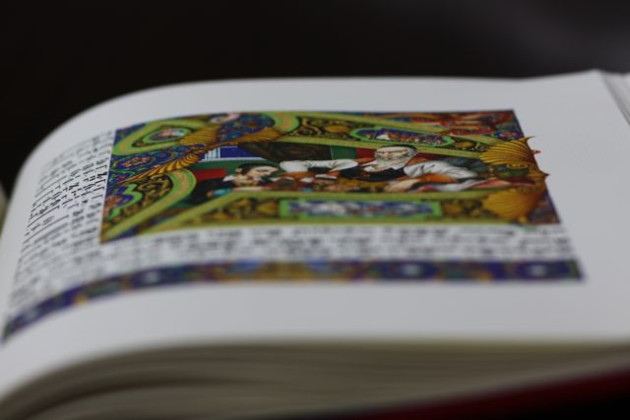
https://www.flickr.com/shawncalhoun
The Passover Seder is one of the most widely observed of Jewish rituals, and it’s no wonder. Copious amounts of wine, food, and a good story are bound to draw a crowd. With the focus all too often on the brisket and Merlot (or in many Jewish homes, the Malvasia), it’s easy to forget that the food and wine flow – pun intended – from the story, and not the other way around.
Passover is at heart a storytelling holiday. For it is written, “And you shall tell your child on that day saying. ‘Because of this God did for me by bringing me out of Egypt.’” (Shmot 13:8). Rooted in this verse, the Passover hagadah is essentially a children’s book, the seder an extended bedtime story. The Exodus is in many ways the story of the Jewish people––the one where we become who we will be (for a while, anyway), a self-governing nation with our own homeland. The seder, then, is not just about telling a story but teaching our children––and reminding our adult selves––about our collective values and identity: This is who we are, this is where we come from, this is what we believe. The matzah, bitter herb, and the rest of the items on the seder plate are not just symbolic foods but visual and gustatory aides to help bring the story to life, to make the pain and suffering of slavery, and the elation at being free, into something tactile, experiential and real. We are not just obligated to tell the story, but to feel as if we ourselves are going out of slavery in Egypt, wandering through the desert, and then ultimately finding ourselves a free and sovereign people in the land of Israel. Hallelujah!
- No Comments
April 4, 2017 by Amy Schreibman Walter
My First Passover After Divorce
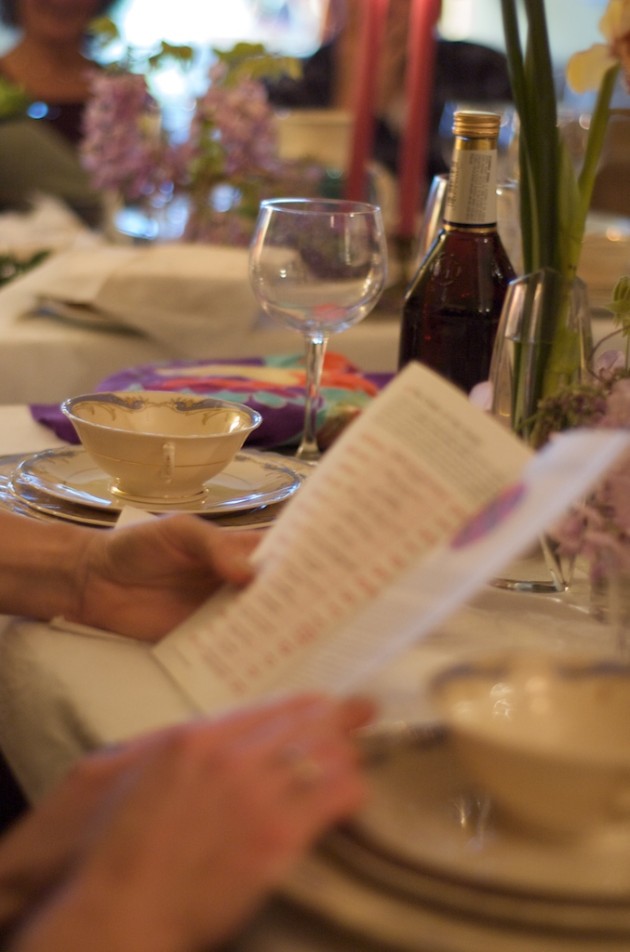
flickr.com/photos/abewallin
365 days ago, I was a newlywed, sitting at the Passover table with my husband, Jacob*, and his family. Laughter, love and good humor were in abundance. The warmth in the room was palpable. As I readied myself to make a toast celebrating my new family, I felt a lump in my throat, unable to finish the toast without welling up with tears. Six months before, marrying Jacob had brought me many gifts — one of them was this family. I already loved them dearly.
My mother in law’s seder plate had been beautifully laid out as a centerpiece on the long table, and I’d spent a few hours helping her prepare the room for dinner. I felt then the kind of contentment that comes from being part of something meaningful — family, tradition, love. Posting a photograph on Facebook the next day – me standing in the middle of a long row of Oster* family members, my caption said, simply: “Happy Passover! LOVE the Oster Family!”
It was a happy Passover indeed, and the one before that and had been just as special. It was the first one (actually, the only one) that Jacob and I hosted together in our apartment after I moved in with him. Passover that year fell just a few weeks before we got engaged. He handcrafted his own Haggadah; he wowed my parents and my friends with his color-coordinated table settings. There was effort, commitment and love. Again, just as last year – an abundance.
- 1 Comment
April 4, 2017 by Aileen Jacobson
Gender Plays Out on B’way

The theater was packed—there had been long lines outside as invited guests and hopeful members of the public jostled to enter and find seats. Inside, the stage of the August Wilson Theater, which opened in 1925 with a production of George Bernard Shaw’s “Caesar and Cleopatra,” was filled with theater luminaries. It was December 6, 2016, and the 1,200 or so people in attendance were gathered to pay tribute to Edward Albee, who had died two months earlier at the age of 88.
It was a lovely event, filled with anecdotes from colleagues and excerpts from Albee’s plays delivered by well-known actors, and I was happy that a friend had invited me along. It slowly dawned on me, however, that among the dozens of speakers who rotated on and off the stage, there was only one female playwright. That was Emily Mann—and she was introduced not as a playwright but as a director, which was indeed her role in Albee’s life. Everything said on the stage was appropriate for the occasion, including the comments by Terrence McNally, John Guare, Arthur Kopit and Will Eno, all fellow playwrights who, like Albee, have had shows produced on Broadway, the pinnacle of American commercial theater.
But wait, I thought to myself, where are the women?
- No Comments
April 3, 2017 by Eleanor J. Bader
Making Murals in the Public Interest
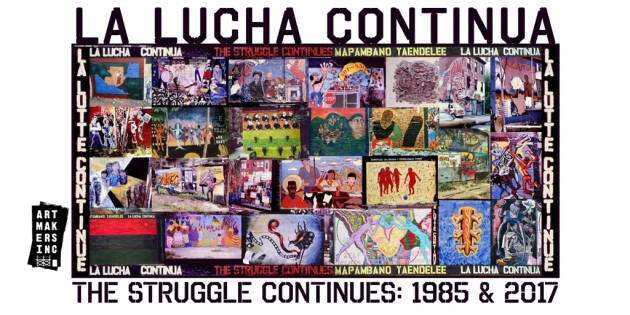 Thirty-two years ago, 34 artists came together and painted a series of 24 murals on the walls of four buildings surrounding La Plaza Cultural Community Garden in Manhattan’s East Village. By that point the lot was filled with rubble, having been neglected for many years. But Artmakers Inc., an organization formed in 1983 to create public art that addresses community concerns, saw this as a challenge rather than as an impediment.
Thirty-two years ago, 34 artists came together and painted a series of 24 murals on the walls of four buildings surrounding La Plaza Cultural Community Garden in Manhattan’s East Village. By that point the lot was filled with rubble, having been neglected for many years. But Artmakers Inc., an organization formed in 1983 to create public art that addresses community concerns, saw this as a challenge rather than as an impediment.
In fact, participants in the mural project recognized that the garden, on the corner of East 9th Street and Avenue C, was in a rapidly changing neighborhood and they were determined that the paintings would address some of the most burning issues of the 1980s: feminism, gentrification, immigration, and police brutality. They also wanted to convey their opposition to South African apartheid and U.S. intervention in Central America.
These were not unusual subjects for the Artmakers. Indeed, virtually every Artmaker installation tackles political issues, with titles such as “We Shall Overcome,” “When Women Pursue Justice,” and “We’re Still Waiting.”
Artmakers was founded by Eva Cockcroft (1937-1999), a Vienna-born activist artist whose family came to the U.S. after Hitler came to power. Since its founding 34 years ago, the group has created more than 50 murals, most of them in the five boroughs of New York City. Sadly, many no longer exist—some buildings have been torn down, walls have been whitewashed, and weather has taken its toll.
- No Comments
March 30, 2017 by Ilana Kurshan
You May Want to Feed My Children
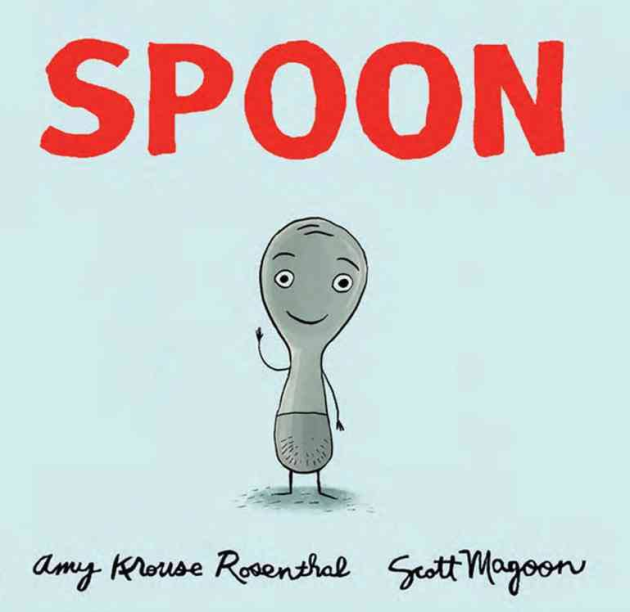 Yesterday my twins bit each other when an argument between them escalated rather quickly into a violent row. We were sitting at the kitchen table eating breakfast, and I was just about to read aloud to them from Amy Krouse Rosenthal’s Spoon, a longstanding dinnertime favorite in our family. My husband and I had selected this book together during our “date night” out during our vacation in the U.S. last summer, when his mother watched our kids so that we could have an evening to ourselves outside of the home. We got in the car and drove straight to Barnes and Noble, where we spent our kid-free evening—um—picking out books for our kids. Spoon caught our attention immediately because of its fetching illustrations of anthropomorphized cutlery—the spoon on the cover has wide eager eyes and a friendly arm raised in greeting.
Yesterday my twins bit each other when an argument between them escalated rather quickly into a violent row. We were sitting at the kitchen table eating breakfast, and I was just about to read aloud to them from Amy Krouse Rosenthal’s Spoon, a longstanding dinnertime favorite in our family. My husband and I had selected this book together during our “date night” out during our vacation in the U.S. last summer, when his mother watched our kids so that we could have an evening to ourselves outside of the home. We got in the car and drove straight to Barnes and Noble, where we spent our kid-free evening—um—picking out books for our kids. Spoon caught our attention immediately because of its fetching illustrations of anthropomorphized cutlery—the spoon on the cover has wide eager eyes and a friendly arm raised in greeting.
Only when we began reading did we realize that we were in the hands of a witty, word-loving wonder of a writer—which is to say that her Spoon was in our hands. The eponymous Spoon, we learn, is jealous of the knives and forks, who get to cut and spread and who never go stir-crazy. But then Spoon’s mother reminds him that only he gets to dive head-first into a bowl of ice cream and relax in a hot cup of tea, and Spoon begins to appreciate what only he can enjoy.
The book, on one level, is a simple tale about being content with one’s lot. As indeed, it seems, Amy Krouse Rosenthal was as well. Two weeks ago she had broken my heart and the hearts of thousands of other New York Times readers with her Modern Love column entitled “You May Want to Marry My Husband,” about her love of life and the love of her life, her husband of 26 years whom she would soon be parting with because she was tragically dying of terminal cancer.
- 1 Comment
March 29, 2017 by Amelia Dornbush
How One TV Show Helped Me Better Understand Abortion
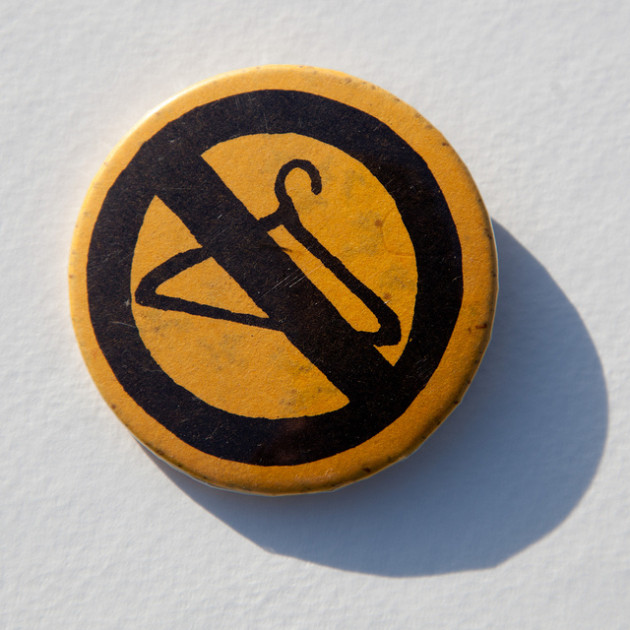
Photo Credit: Robert Couse-Baker
There is a scene in season five of Scandal when the protagonist Olivia Pope gets an abortion. She does not tell her then-boyfriend Fitz about her decision. In fact, the entire scene happens without her saying a word. Aretha Franklin’s “Silent Night”—with words such as “all is well, all is right”—plays in the background. Though the presentation of abortion was not without a few flaws, on the whole it was incredibly powerful, and personally empowering. As I was watching the show, it occurred to me this was one of the few times I had seen an abortion on TV (another had been in an earlier episode of the same show.) Though I have never had an abortion, I didn’t realize how badly I needed to see positive depictions of the procedure until it was in front of me.
When I was a kid, I was very much a rule-follower. I had an anxiety attack over the fact that in science club we changed the color of a penny when I found out that there was a law banning defacement of US currency. My stomach actively tied itself into knots whenever FBI copyright warnings came on TV lest I should potentially violate their edicts. I got good grades and stayed out of trouble.
How I learned to break the rules is a different story for a different time, but a side effect to my non-rebellious decades is that I deeply internalized societal stigmas no matter what I might abstractly have believed politically. This manifested in many different arenas—my attitude towards drinking (others could, I couldn’t) and therapy (same)—and in my attitude about abortion.
- No Comments
March 24, 2017 by Chanel Dubofsky
NYC Offers Domestic Workers–Documented and Undocumented Alike–An Overview of Rights and Resources
This month, New York City’s Department of Consumer Affairs released a unique document entitled “NYC Cares for Care Workers: An Overview of Rights and Resources.” The document, directed at domestic care workers (home attendants, nannies, housecleaners, etc) in NYC, outlines not only what workers are entitled to, such as minimum wage and paid sick leave, but also connects workers with resources for financial counseling, health insurance, and English classes.
The Paid Care Brochure is the result of the eight year partnership (from 2002-2010) between Domestic Workers United (DWU) and Jews for Racial and Economic Justice (JFREJ), during which the two groups organized domestic workers and their employers, along with members of JFREJ, to pass the Domestic Workers Bill of Rights in both New York City and in the state. In addition to outlining a worker’s right to time off and overtime, the bill has specific protections for workers who experience sexual and/or racial harassment on the job. It was signed in July 2010, and was the first legislation of its kind in the country (Hawaii later passed a Domestic Workers Bill of Rights in 2013). JFREJ and DWU advised the New York Department of Labor in creating the Division of Paid Care, the author of the Paid Care Brochure. “The vast majority of people who employ domestic workers want to do the right thing, so they’re asking what they can do to show that they care about their employees’ safety,” said Rachel McCullough, JFREJ’s Director of Organizing. “This is the document that outlines the protocol for respecting the work that makes all the other work possible—building a caring economy that works for everyone.”
- No Comments
March 23, 2017 by Matilda Feder
My Unexpected Journey at the Washington Jewish Literary Festival
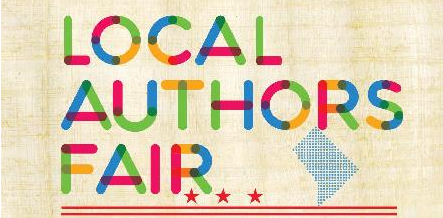 I was particularly interested in the Washington Jewish Literary Festival this year because of its theme, “Unexpected Journeys.” It fit its title from the start. My first event of the festival, the Local Authors Panel on March 15, was also the opening event because of an unexpected late winter snowstorm that delayed the start of the festival. And in asking local Jewish authors about the festival theme, I too was taken down a surprising road.
I was particularly interested in the Washington Jewish Literary Festival this year because of its theme, “Unexpected Journeys.” It fit its title from the start. My first event of the festival, the Local Authors Panel on March 15, was also the opening event because of an unexpected late winter snowstorm that delayed the start of the festival. And in asking local Jewish authors about the festival theme, I too was taken down a surprising road.
The moderator of the Local Authors panel was Leslie Maitland, a former award-winning reporter and national correspondent for the New York Times. Maitland opened the event by introducing herself and describing how she came to write her own book about her mother’s escape from Europe during World War II. She retraced her mother’s past both physically, by visiting the places her mother had travelled through, and intellectually, by working to research what had happened to the long-lost love her mother had been forced to leave behind.
- No Comments
 Please wait...
Please wait...